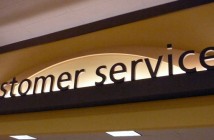Inventory control is not an exercise in providing numbers for the accountants or the IRS; it is an essential element of good customer service.
As a young buyer for a grocery chain, I used to tour the reclamation center to see how many returned items had been pulled from our retail stores. The reclamation center was a small warehouse that processed returned items from our retail stores, such as outdated merchandise, damaged products, or excess inventory.
Such items would be sent to the food bank, destroyed, or returned to the suppliers for credit. We had just implemented a new “lean and mean” inventory system. I was pushing the limits of the new system, and I was reducing my inventory levels very quickly. During this period I would make frequent visits to the reclamation center to see the impact of the new inventory system.
Upon one visit to the reclamation center, I saw my vice president checking the outdated and returned merchandise. I asked him what he thought of the new inventory system. His reply was that he was looking to see what products where not showing up at the reclamation center.
He also said,” I see you have very little excess inventory being returned from the retail stores.” I told my vice-president how well I was controlling my inventory levels because I had seen very little excess inventory coming into the reclamation center for the last three weeks.
His answer: “You should be more concerned about serving our customer and less concerned about having excess inventory.” He said if the goods are not showing up here (the reclamation center), the stores might run the risk of experiencing lost sales, and lost sales could result in lost customers.
He was right. I started to review my customer service level reports for the retail stores, and sure enough my inventory levels were running too thin. Some stores were either running too low on inventory or—worse—completely running out. I had been more focused on and enamored with managing the inventory numbers than providing good customer service.
Inventory control is a customer service issue. Successful inventory management involves striking that balance between not having enough inventories on hand and having too much. Either you have the cost of excess inventory or the cost of a lost sale. It is painfully obvious which is lesser evil of the two.
In order to conduct proper inventory control, you must have the ability to look at past sales and predict future demand. When forecasting your demand, you must learn from your past mistakes. Previous marketing promotions must be tracked closely to measure the impact of sales increases. Understanding your sales cycle and customer buying patterns will help you gain a greater understanding of your customers.
Employing best practices for inventory control will help to maintain an in-stock position of wanted items while also controlling the disposal of unwanted items. There are several best practices for inventory control, and many of the these systems are still tried-and-true manual systems. The list below is a range from the simple to the complex.
Visual control: This method enables the manager to examine the inventory visually to determine if additional inventory is required. In very small businesses where this method is used, records may not be needed at all or only for slow moving or expensive items.
Tickler control: This method enables the manager to physically count a small portion of the inventory each day so that each segment of the inventory is counted every so many days on a regular basis.
Click sheet control: This method enables the manager to record the item as it is used on a sheet of paper. Such information is then used for reorder purposes.
Stub control: This method enables the manager to retain a portion of the price ticket when the item is sold. The manager can then use the stub to record the item that was sold.
Other new developments for small businesses are the Point-of-sale terminals which relay information on each item used or sold. Managers can receive continuous information regarding the sale of merchandise. The data collected can quickly be transmitted to suppliers for replenishment orders.
Another system for controlling inventory is the Off-line point-of-sale terminals that can relay information directly to the supplier’s computer. This information is used to ship additional items automatically to the small business retail outlet.
Performing these inventory methods on a regular basis will help you ensure that your suppliers are sending the right amount of product to your warehouse.
Your need to acquire more complex and sophisticated systems will depend upon the size and growth of your business. The lower cost of new technology and computer systems has made the automated inventory control systems more affordable for small businesses. Often suppliers and the adoption of new industry best practices will influence the decision to acquire more complex systems. These newer inventory control systems for small businesses now have interfaces into accounting systems and billings systems. The synergy of collectively having an integrated system performing numerous coordinated activities has now become feasible for small businesses.
One last note: inventory control will help you keep up with customer demands, while reducing excess cash flow and improving your reputation. Inventory control is not about having the most sophisticated complex system; it is about good customer service.
James Ellis is an assistant professor in the business department of Central Oregon Community College. He can be reached at 541-383-7718.




